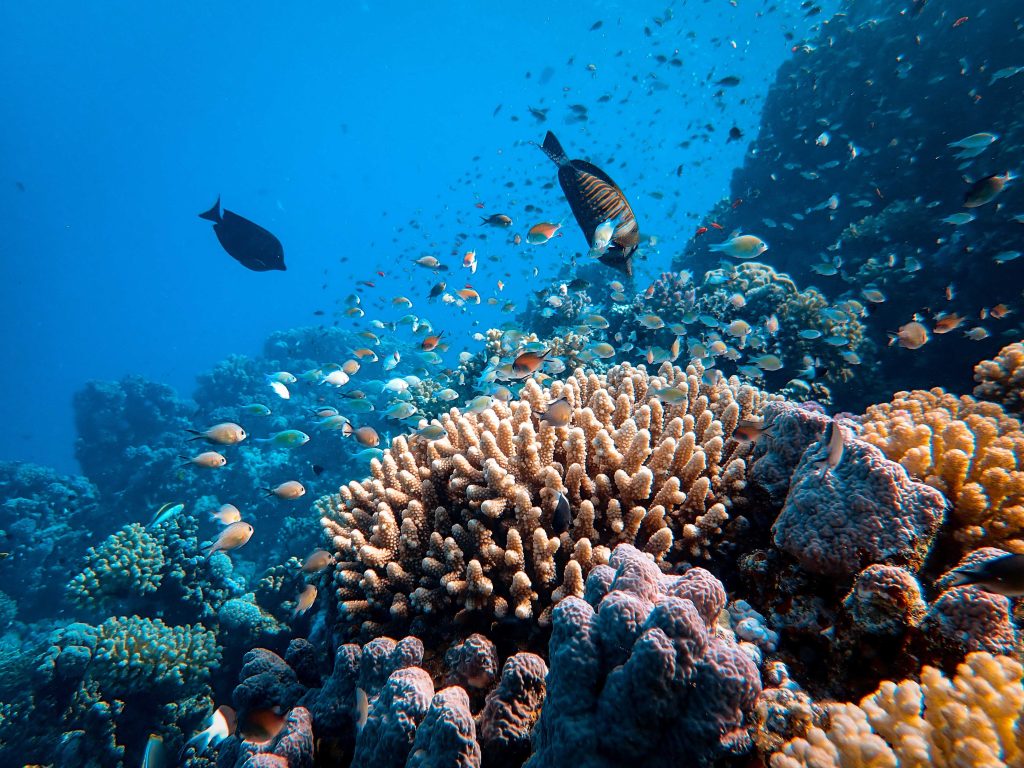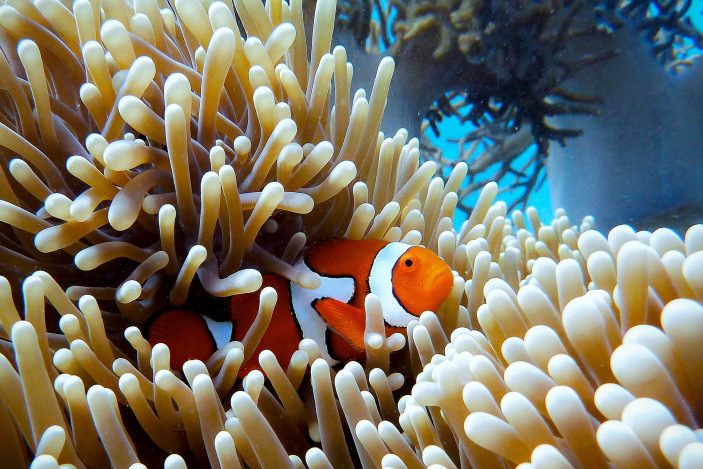The Great Barrier Reef, located off the northeastern coast of Australia, is the largest coral reef ecosystem on the planet. Stretching over 2,300 kilometres (over 1,400 miles), this vibrant underwater world is one of the most diverse and complex natural habitats globally.
However, climate change and other threats have led to substantial damage in recent decades, making the reef’s preservation a matter of worldwide urgency and importance.
Historical and Cultural Significance
For indigenous Aboriginal and Torres Strait Islander peoples, the Great Barrier Reef has been fundamental to their cultural traditions, folklore, and way of life for over 60,000 years.
The reef features prominently in their ancient stories, art, rituals, and oral histories. Many sites along the reef hold spiritual significance. Generations have relied on the bountiful resources of the reef for sustenance and trade. Early European explorers in the 18th and 19th centuries, including Captain Cook and Matthew Flinders, produced the first written documentation and navigational charts mapping the expansive and perilous reef, contributing to its legendary status as a maritime landmark. Shipwrecks were tragically common, earning the reef a reputation for treachery. Yet it also guided sailors safely along the coast. The reef came to feature in European art and literature.
Today, the long and rich history tied to the Great Barrier Reef makes it a source of identity, reverence, and pride for both indigenous Australians and the nation.
Unparalleled Biodiversity

Home to over 1,500 species of fish, 400 varieties of coral, 4,000 mollusk species, 215 types of bird, and many other marine organisms like crustaceans, sea snakes, and marine mammals, the Great Barrier Reef contains some of the most biodiverse and extraordinary ecosystems on the planet.
It includes rare species like the dugong and large populations of threatened species, such as green sea turtles, loggerhead turtles, and humpback whales, which rely on the reef for their survival and propagation. The interconnectedness between the reef, neighbouring rainforests, mangrove forests, and seagrass beds highlights the ecological complexity of this region. The reef’s expansive size makes it visible from space and gives it a level of biodiversity greater than even the Amazon rainforest. Species compete in ecological niches allowing for high specialisation.
New species are continually discovered in the reef’s rich diversity, with recent finds including unique corals, sea sponges, worms, and crustaceans. Preserving this biodiversity is vital for scientific knowledge and maintaining ecological balance.
Major Economic Engine
Valued at over $5.2 billion per year and employing over 64,000 people, the Great Barrier Reef is a major contributor to Australia’s economy via tourism, commercial fishing, and other industries. Over 2 million local and international visitors travel to the region annually to experience the reef’s beauty, generating vital tourism revenue for local businesses as well as the nation.
Sustainably managed commercial fishing in the Great Barrier Reef Marine Park also employs several thousand people while producing over $200 million of seafood annually, feeding both Australia and the world. The proximity of major urban centres like Cairns and Port Douglas to the reef has allowed an entire tourism industry including hotels, restaurants, transportation, tour providers and other services to develop around reef access.
The Australian and Queensland governments also invest significantly in reef management, research and protection. Other industries such as education, renewable energy, marine engineering and more, indirectly benefit from the reef’s contributions. It is an economic asset unmatched anywhere else in the world.
Advancing Global Scientific Knowledge
As one of the most well-preserved and accessible natural marine habitats globally, the reef serves as an enormous outdoor laboratory for marine biologists, ecologists, conservationists and other scientists seeking to understand the biodiversity sustained by coral reefs and monitor the reef’s health.
Many species unknown to science, from colourful fish to strange corals, have been discovered here over the decades, with new ones identified yearly, thereby expanding global scientific knowledge. The reef has allowed breakthrough research on breeding patterns of marine species, coral ecology, species migration connected to climate, and many other fields vital for reef conservation worldwide.
As climate change escalates, the Great Barrier Reef is also the focus of studies examining rising sea temperatures, ocean acidification and resilience in reef systems. This research is contributing models to project climate impacts on reefs globally. The abundance of marine life has also supported advances in genetic science to uncover new evolution pathways and connections between coral and human genomes. Such a living laboratory is unparalleled in its research value worldwide.
Severe Threats from Climate Change
Rising ocean temperatures have led to devastating mass coral bleaching events over the past few decades, causing up to 50% coral loss in some sections of the Great Barrier Reef. Ocean acidification due to increased absorption of atmospheric carbon dioxide is also threatening coral growth and reef structures. Cyclones powered by warmer seas have further damaged fragile corals.
As a sensitive ecosystem affected early by global climate shifts, the rapid deterioration of the Great Barrier Reef provides crucial insight into how climate change could severely impact marine habitats worldwide if greenhouse gas emissions remain unchecked. The damages observed reinforce scientific models predicting coral reefs globally could face functional extinction by mid-century without ambitious climate action.
The reef’s decline also shows how interconnected ecosystems suffer cascading effects, threatening marine food chains and species able to migrate from disturbance. Urgent climate policy and emissions cuts are vital to give reefs a fighting chance to survive through the coming decades of climatic disruptions.
Cultural and Recreational Magnet
Spanning 2,300 kilometres, the equivalent distance between California and Maine, the Great Barrier Reef has inspired creative works and imagination worldwide.
Artists, photographers, filmmakers and musicians showcase the reef’s beauty and fragility. Cultural sites along the reef hold spiritual meaning for indigenous peoples. It provides recreational offerings drawing millions of snorkelers, scuba divers, boaters, and other tourists annually, highlighting its broad cultural appeal, accessibility and economic value as a global destination.

Tourism relies on maintaining the biodiversity, health and visibility of the reef system. Many tourists are also drawn by the reef’s conservation story and efforts to experience it before potential disappearance. As one of the world’s most recognisable natural icons, the loss of the Great Barrier Reef would resonate culturally across the globe.
Global Cooperation Needed to Preserve Reef
Protecting the Great Barrier Reef for future generations requires immediate and sustained national and international action on multiple fronts, including improving water quality reaching the reef from coastal agriculture, regulating sustainable fishing practices, controlling coastal development, and, most crucially, ambitious global climate change mitigation.
As one of the most significant ecosystems on the planet, preserving the Great Barrier Reef is a shared priority for all nations under the UN Sustainable Development Goals. Initiatives like UNESCO designation as a protected World Heritage Site and multilateral scientific partnerships have supported conservation efforts. Local island communities are also undertaking conservation work, such as Fitzroy Island’s efforts to control crown-of-thorns starfish through injection and reef restoration programs.
But the stark climate threats facing the reef underscore the need for accelerated progress on Paris Agreement commitments globally. Only through cooperation from all countries, particularly major carbon emitters, can meaningful action be taken to curb the climate impacts jeopardising the reef’s survival.
Discover the Great Barrier Reef Today
In conclusion, the Great Barrier Reef stands as not only a natural wonder but also a global treasure of immense ecological, economic, and cultural significance. Its delicate ecosystems and the countless species that call it home remind us of the interconnectedness of all life on Earth and the urgent need for international cooperation to protect and preserve our planet’s most precious assets.
As we confront the challenges of a changing climate and the threats posed by human activities, the continued health and resilience of the Great Barrier Reef should serve as a powerful symbol of our shared responsibility to safeguard the natural wonders of our world for generations to come. It is a testament to the collective efforts of scientists, conservationists, and nations worldwide that we can still marvel at the beauty and biodiversity of this extraordinary reef, and it is our duty to ensure that it endures for the benefit of both current and future generations.





